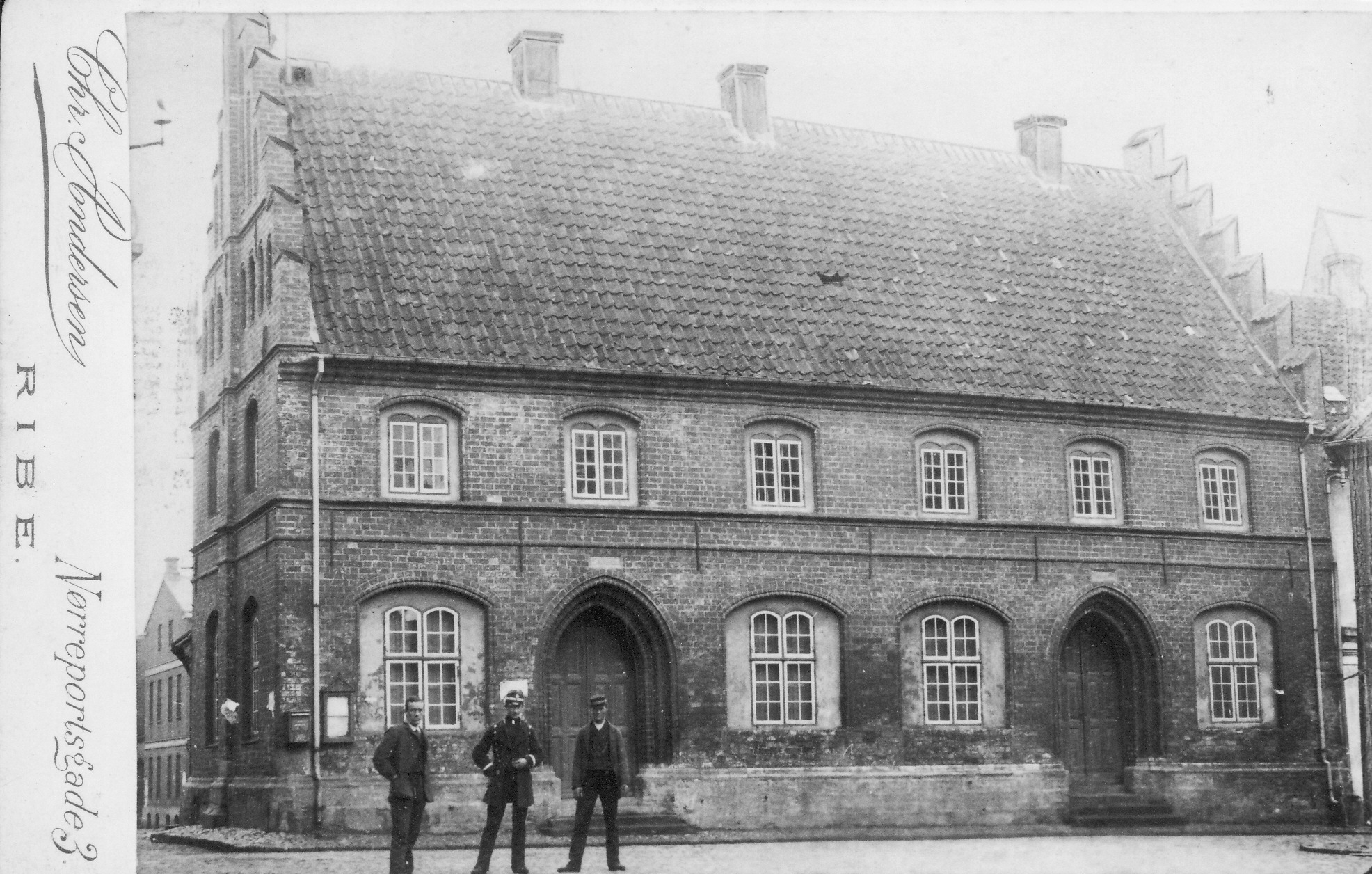The first time we hear about the building is in connection with a sale in 1496. But at that time it had probably already stood there for over two hundred years and originally belonged to the dom chapter, i.e. the church. In reality, there were two independent buildings, each of which had a floor plan of around 80 m2 and was on two floors with a basement.
At the end of the 1520s, the two so-called stalls were built together and got the Renaissance look that we see today. In the following almost two hundred years, a number of the city’s rich citizens lived in the house, but in 1709 the house came into public ownership. The city government needed a smaller and more solid town hall than the existing one in Grønnegade, which was eventually so poor that it was demolished and the materials used in other houses in the city.
From 1709 until the major municipal reform in 2006, the house functioned as a town hall, but in the end only for town council meetings and ceremonial purposes.
The Old Town Hall had to accommodate many functions: Administration, archive, meeting room, courtroom and detention. Although the public administration was minimal, and the citizens of Ribe were probably no more criminal than elsewhere, it quickly became apparent that the building was far too small to accommodate it all. Therefore, an extension was soon made along Sønderportsgade, which housed the courtroom and accommodation for the detention officer as well as a small fire station.
Only in the 1890s the creation of a major expansion succeed. The building next to The Old Town Hall, facing the cathedral square, was now used as a prison and housing for the prison guard. It had previously housed a school and a teacher’s residence.
After this, the town hall’s side building facing Sønderportsgade could be demolished. Here, a large courtroom was set up on the ground floor and a beautiful city council hall on the first floor. Where there had previously been a detention on the ground floor, from 1904 a small museum, the Town Hall Collection, was set up, which tells about the city’s law enforcement, including the guards.
It soon became apparent that the Old Town Hall could not accommodate the ever-increasing need for space for the public administration. The municipality and county therefore had to buy and rent buildings around the city. After the major municipal reform in 1970, a large new town hall was built in Sct. Nicolaj Gade, and the county council and the entire administration could in the mid-1970s gather in a new county administration building on the northern outskirts of the city.
Of functions in the Old Town Hall, there were now only city council and county council meetings, which continued to be held in the atmospheric city council hall. The town hall was also a perfect place for civil weddings, and otherwise the building was mostly used for ceremonial purposes. In December 2006, the last city council meeting was held. The major municipal reform meant that Ribe became part of Esbjerg Municipality from 2007, and the counties were abolished in favor of large regions. A simultaneous reform of the entire judicial system meant that the district court was also abolished and gathered in a large court building in Esbjerg.
Since 2007, the Old Town Hall has therefore functioned as a meeting and cultural center. Two or three mornings a week, the house is available to the municipality for weddings in the Civic Hall, but in addition Sydvestjyske Museums is responsible for the building’s operation. It is used for a large number of meetings and events; there is still a small exhibition about law and order in Ribe, and a new exhibition about the great composer Rued Langgaard is on its way; and the town hall now also houses a small tourist information.
Both the main and side buildings are – of course – listed.
